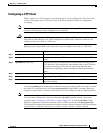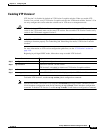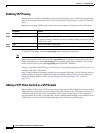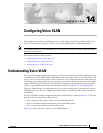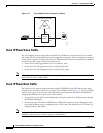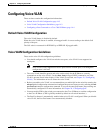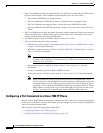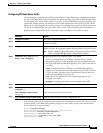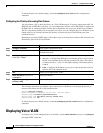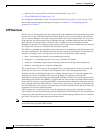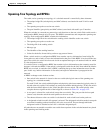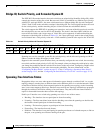
14-3
Catalyst 2960 Switch Software Configuration Guide
78-16881-01
Chapter 14 Configuring Voice VLAN
Configuring Voice VLAN
Configuring Voice VLAN
These sections contain this configuration information:
• Default Voice VLAN Configuration, page 14-3
• Voice VLAN Configuration Guidelines, page 14-3
• Configuring a Port Connected to a Cisco 7960 IP Phone, page 14-4
Default Voice VLAN Configuration
The voice VLAN feature is disabled by default.
When the voice VLAN feature is enabled, all untagged traffic is sent according to the default CoS
priority of the port.
The CoS value is not trusted for IEEE 802.1p or IEEE 802.1Q tagged traffic.
Voice VLAN Configuration Guidelines
These are the voice VLAN configuration guidelines:
• You should configure voice VLAN on switch access ports; voice VLAN is not supported on
trunk ports.
Note Voice VLAN is only supported on access ports and not on trunk ports, even though the
configuration is allowed.
• The voice VLAN should be present and active on the switch for the IP Phone to correctly
communicate on the voice VLAN. Use the show vlan privileged EXEC command to see if the
VLAN is present (listed in the display). If the VLAN is not listed, see Chapter 12, “Configuring
VLANs,” for information on how to create the voice VLAN.
• Before you enable voice VLAN, we recommend that you enable QoS on the switch by entering the
mls qos global configuration command and configure the port trust state to trust by entering the mls
qos trust cos interface configuration command. If you use the auto-QoS feature, these settings are
automatically configured. For more information, see Chapter 29, “Configuring QoS.”
• You must enable CDP on the switch port connected to the Cisco IP Phone to send the configuration
to the Cisco IP Phone. (CDP is globally enabled by default on all switch interfaces.)
• The Port Fast feature is automatically enabled when voice VLAN is configured. When you disable
voice VLAN, the Port Fast feature is not automatically disabled.



